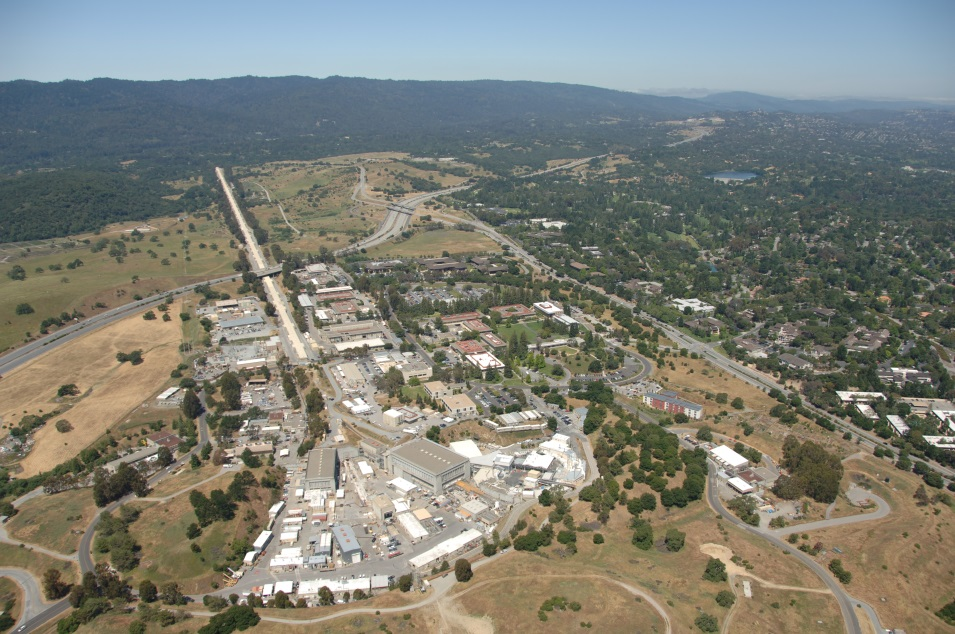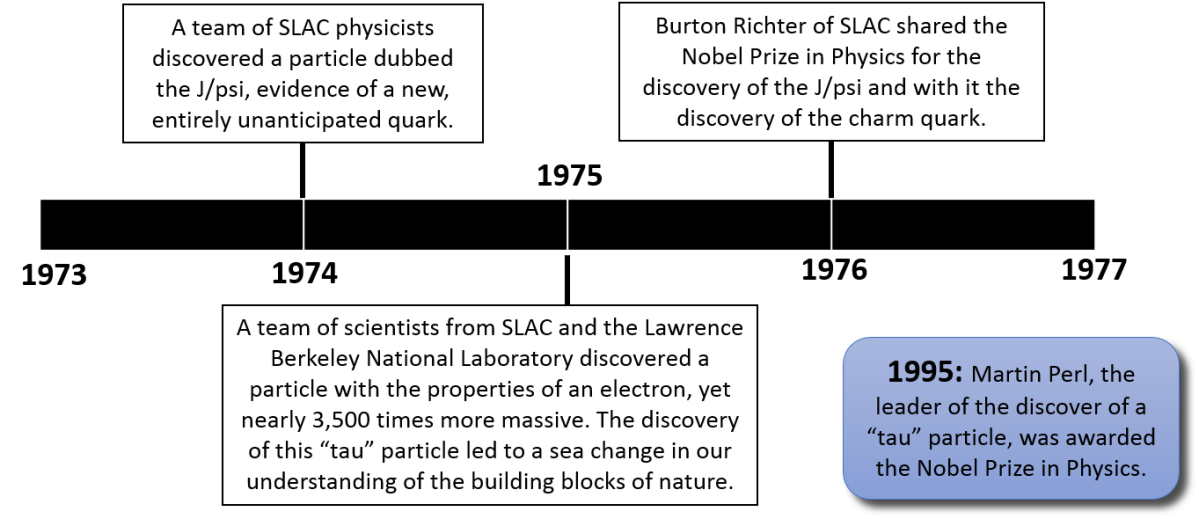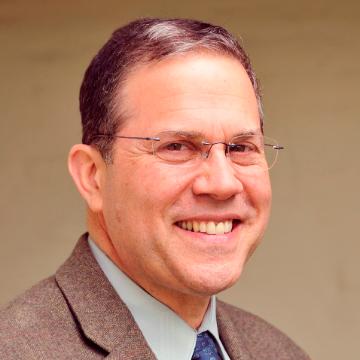
Accelerating Science for More Than 50 Years
Phil Kesten
Nestled against the hills above Palo Alto, the SLAC National Accelerator Laboratory is well into its second half-century. Let’s wonder a bit about one of the world’s most advanced scientific machines.
SLAC—the Stanford Linear Accelerator Center before it was renamed in 2008—continues to make its mark on science. Experiments conducted there have made enormous contributions to our understanding of the natural world, and have garnered a host of Nobel Prizes. More, perhaps, are yet to come.
In what fields are these contributions?
According to SCU alumnus Mitch Mark ’92, “Dedicated engineers and scientists from all over the world work tirelessly to solve problems that span areas in energy, medicine, chemistry, biology, and astrophysics.” And it’s not just about the science. At SLAC, SCU alumna Mumtaz Pierre-Davis ’98 works with “great minds doing great things … smart people striving to make the world a better place.” Something, she says, is aligned with the Jesuit values she learned at Santa Clara.
At the heart of SLAC is the linear accelerator, a device that sends electrons rocketing down a two-mile long tube. The energy of the electrons gets repeatedly kicked up along the way; by the time they reach the end of the tube, the electrons are travelling close to the speed of light.

Caption: The two-mile long SLAC linear accelerator. Running left and right is Highway 280, and from the right side up toward the top is Sand Hill Road. The Santa Cruz mountains are in the background.
What can you do with all that energy?
Let’s imagine a simple experiment. Hidden behind a wall is an unknown object. You can study it by firing small pellets at it and observing where the pellets end up. From the ring-shaped pattern of scattered pellets you deduce that they have bounced off something round. The unknown object is shaped like a ball.
Repeat the experiment with more energetic pellets. Many still end up in a big ring, but now some scatter to form a second, smaller ring pattern. These, you deduce, have bounced off a hard object inside the ball. The unknown object has a core.
Wait! With even more powerful pellets, some of them appear to scatter off objects inside the core. The core, you deduce, is made up of even smaller constituents.
The unknown object is a peach! Low-energy pellets bounce off its surface, enabling you to deduce that it is round. More energetic pellets sometimes penetrate the skin of the peach and scatter off the pit inside. And even more energetic pellets can scatter off seeds inside the pit. As the energy of the pellets increases, your ability to see deeper inside, to see finer and finer details of the structure of the peach and its constituents, increases.
SLAC’s linear accelerator shoots highly energetic electron pellets at subatomic “peaches”—protons and neutrons that are themselves constituents of atomic nuclei.
Results from experiments conducted right after the SLAC accelerator was first fired up fundamentally changed our understanding of matter.
Results from experiments conducted right after the SLAC accelerator was first fired up fundamentally changed our understanding of matter. The scattering of electrons from deep inside atoms proved conclusively that protons and neutrons are not elementary, but instead composed of smaller particles—quarks. Richard Taylor of SLAC and Jerome Friedman and Henry Kendall, both of MIT, were awarded the Nobel Prize in Physics 1990 for these groundbreaking experiments.
What else can you do with electrons moving with so much energy?
Albert Einstein taught us that energy (E) and mass (m) are equivalent: E = mc2, where c is the speed of light in a vacuum. And as we saw when we wondered about antimatter, when a matter and an antimatter particle meet up, the “stuff” of the two particles disappears and is replaced by equivalent energy. So here’s a neat trick: use electrons to create antimatter electrons, accelerate them for two miles, and smack them into other. The resulting state of pure – and enormous! – energy gives rise to a spectacular variety of particles not commonly found in nature. The opportunity, as the graphic shows, to discover particles as yet unknown!

Research at SLAC over the past 55 years has made significant contributions to science. And as SCU alumna Analisa Tan MBA ’10, says, the laboratory “continues to evolve into different areas.” With ongoing research in biology, chemistry, and the health sciences as well as fundamental physics, SLAC is poised to continue its run far into the future, and Santa Clara University is poised to continue its long association with SLAC. Alumna Jane Davaransky '00, a financial analyst at SLAC, has been instrumental in organizing two tours for alumni of the linear accelerator, as well as an internship fair for current Santa Clara students this year.
-------------------------------------------------------------
Questions to ponder:
SLAC’s linear accelerator must be extraordinarily straight to ensure that electrons and positrons don’t bump into the walls as they zip along. (The design required the accelerator pipe to be within one-eighth of an inch from perfectly straight along the entire two miles. To put that in perspective, the ends of a perfectly straight, two-mile-long pipe would be about 16 inches farther from the Earth’s center than the middle of the pipe, due to the Earth’s curvature.) Consider this along with the fact that SLAC was built within about a quarter of a mile of the San Andreas Fault, one of the world’s biggest and most active earthquake fault lines.

